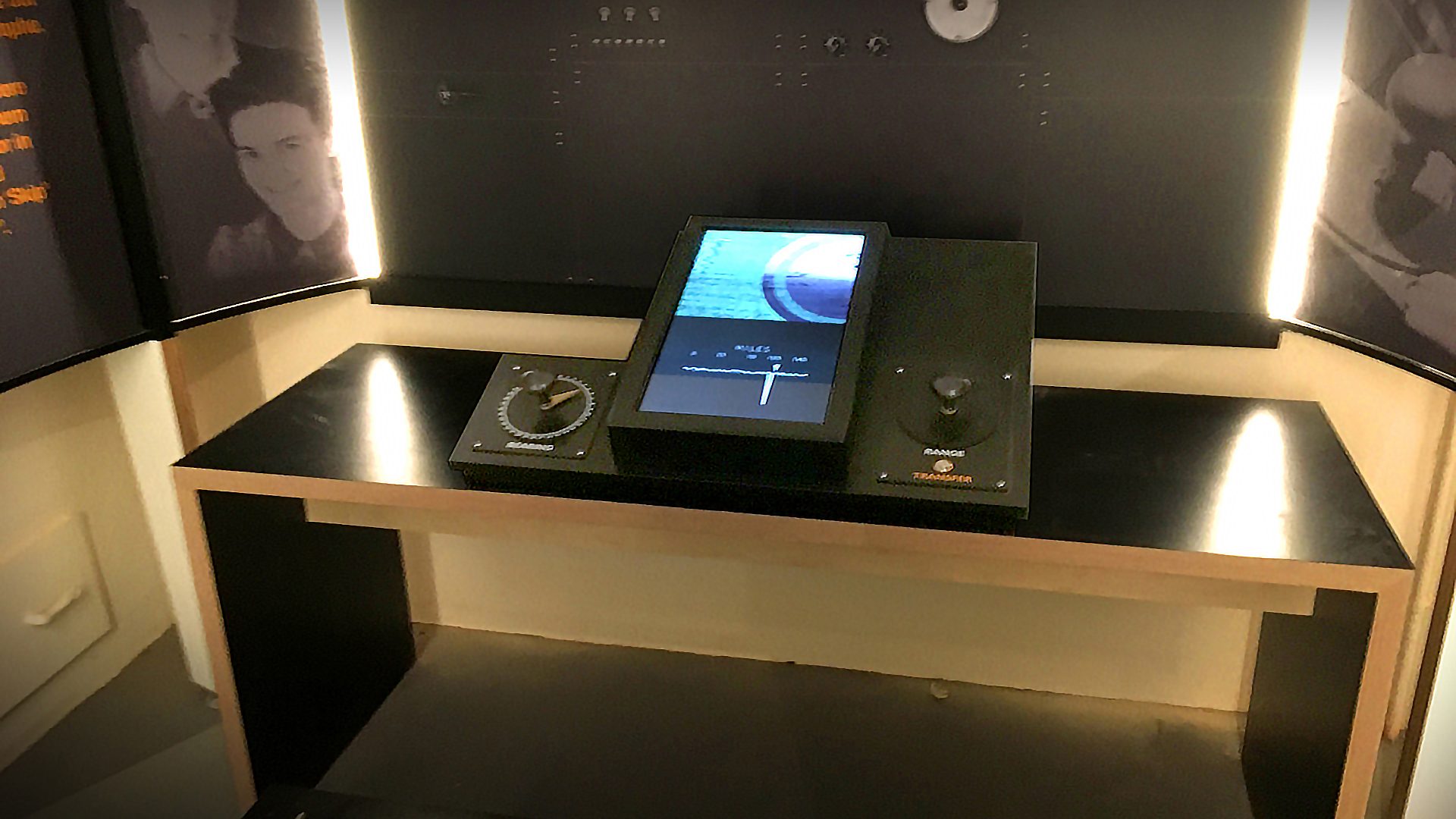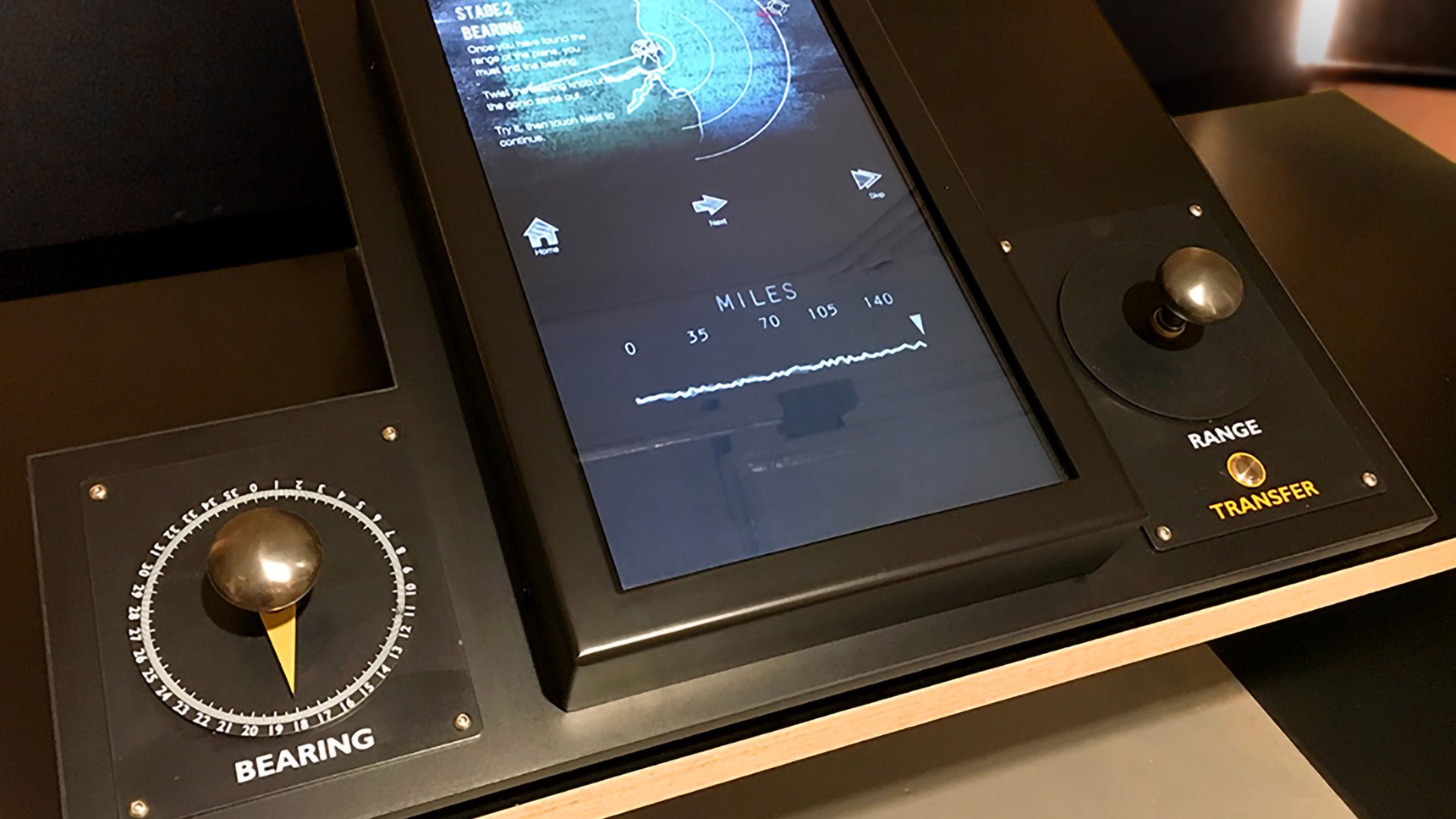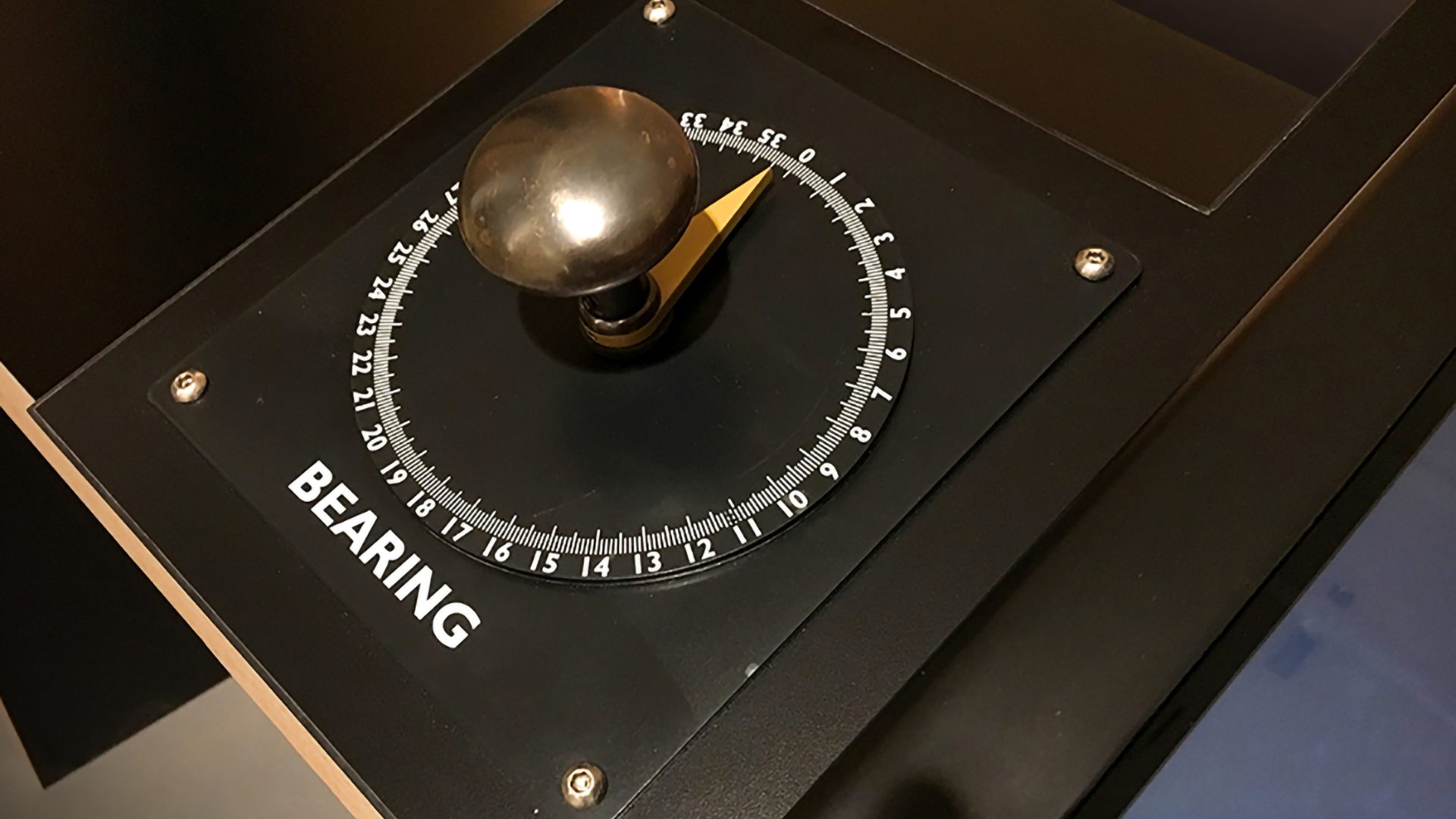In 1937, RAF Bawdsey became the first fully operational Radar station in the world, just eighteen months after it had first been established that approaching aircraft could be detected using transmitted radio waves. We’re delighted to have supported specialist heritage designers, PLB and the Trust on a new interactive exhibit which gives visitors a simulated hands-on experience of using early radar for detection, distance measurement and angle measurement.
The interactive exhibit replicates the original methods used in the Chain Home, the ring of coastal Early Warning radar stations built by the Royal Air Force before and during the Second World War to detect and track aircraft. The ‘Gonio’ interactive is faithful to the Chain Home method where equipment produces a pulse of energy and measures the time of flight from transmission to reception. The objective of the interactive is to enable visitors to understand the process used to determine the trajectory of aircraft. As well as the skill involved in producing accurate results. It replicates original complex early radar systems and simplifies the principles so that anyone can understand and have a go at using this radar system.
The interactive exhibit replicates the original methods used in the Chain Home, the ring of coastal Early Warning radar stations built by the Royal Air Force before and during the Second World War to detect and track aircraft. The ‘Gonio’ interactive is faithful to the Chain Home method where equipment produces a pulse of energy and measures the time of flight from transmission to reception. The objective of the interactive is to enable visitors to understand the process used to determine the trajectory of aircraft. As well as the skill involved in producing accurate results. It replicates original complex early radar systems and simplifies the principles so that anyone can understand and have a go at using this radar system.



